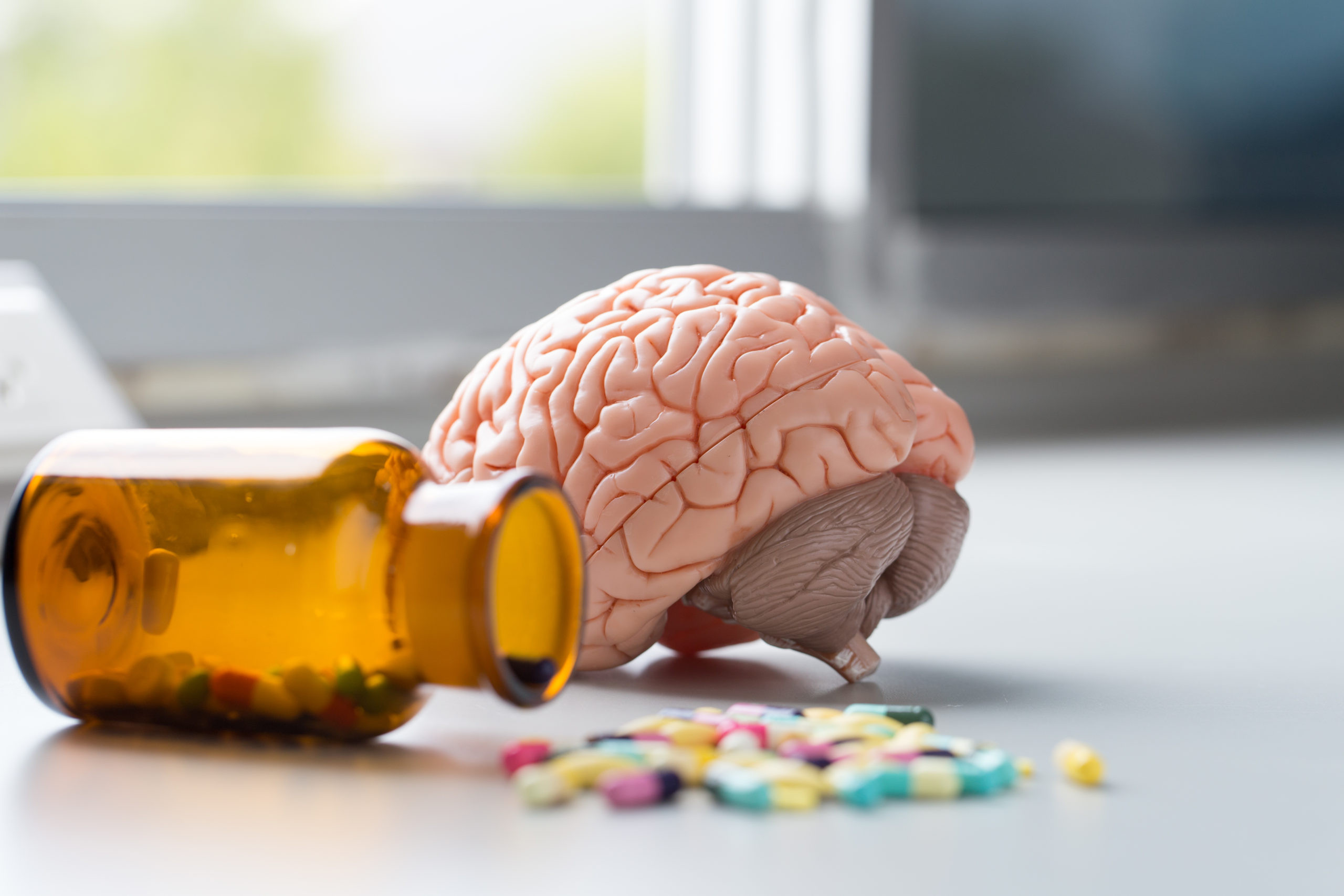Brain plasticity in drug addiction: Burden and benefit

The human brain is the most complex organ in our body, and is characterized by a unique ability called neuroplasticity. Neuroplasticity refers to our brain’s ability to change and adapt in its structural and functional levels in response to experience. Neuroplasticity makes it possible for us to learn new languages, solve complex mathematical problems, acquire technical skills, and perform challenging athletic skills, which are all positive and advantageous for us. However, neuroplasticity is not beneficial if we develop non-advantageous learned behaviors. One example of non-advantageous learning is habitual drug misuse that can lead to addiction.
Our brain learns to respond to drugs of abuse
Our first decision to use a drug may be triggered by curiosity, circumstances, personality, and stressful life events. This first drug exposure increases the release of a molecule (neurotransmitter) called dopamine, which conveys the feeling of reward. The increased changes in dopamine levels in the brain reward system can lead to further neuroplasticity following repeated exposure to drugs of abuse; these neuroplasticity changes are also fundamental characteristics of learning. Experience-dependent learning, including repeated drug use, might increase or decrease the transmission of signals between neurons. Neuroplasticity in the brain’s reward system following repeated drug use leads to more habitual and (in vulnerable people) more compulsive drug use, where people ignore the negative consequences. Thus, repeated exposure to drugs of abuse creates experience-dependent learning and related brain changes, which can lead to maladaptive patterns of drug use.
Views on addiction: Learning and disease
A recent proposed by Dr. Marc Lewis in New England Journal of Medicine highlights the evidence of brain changes in drug addiction, and explains those changes as normal, habitual learning without referring to pathology or disease. This learning model accepts that drug addiction is disadvantageous, but believes it is a natural and context-sensitive response to challenging environmental circumstances. Dr. Nora Volkow, director of the National Institute on Drug Abuse (NIDA), and many addiction researchers and clinicians, triggered by many genetic, environmental, and social factors. NIDA uses the term “addiction� to describe the most severe and chronic form of substance use disorder that is characterized by changes in the brain’s reward, stress, and self-control systems. Importantly, both learning and brain disease models accept that addiction is treatable, as our brain is plastic.
We can adapt to new learned behaviors
Our brain’s plastic nature suggests that we can change our behaviors throughout our lives by learning new skills and habits. Learning models support that overcoming addiction can be facilitated by adopting new cognitive modifications. Learning models suggest pursing counseling or psychotherapy, including approaches such as cognitive behavioral therapy (CBT), which can help a person modify their habits. NIDA suggests that, for some people, medications (also called medication-assisted treatment or MAT) can help people manage symptoms to a level that helps them pursue recovery via strategies such as counseling and behavioral therapies, including CBT. Many people use a of medications, behavioral therapies, and support groups to maintain recovery from addition.
Neuroplasticity can help us modify behaviors relevant to addiction
CBT is an example of a learning-based therapeutic intervention; thus, it utilizes neuroplasticity. Scientific evidence suggests that CBT, alone or in combination with other treatment strategies, can be effective intervention for substance use disorders. CBT teaches a person to recognize, avoid, and learn to handle situations when they would be likely to use drugs. Another example of evidence-based behavioral therapy that has been shown to be effective for substance use disorders is . Contingency management provides a reward (such as vouchers redeemable for goods or movie passes) to individuals undergoing addiction treatment, to reinforce positive behaviors such as abstinence. This approach is based on operant conditioning theory, a form of learning, where a behavior that is positively reinforced tends to be repeated. Overall, multiple evidence-based approaches are used for the treatment of substance use disorders that require learning and utilize neuroplasticity.
The bottom line
Our brain is plastic, and this trait helps us learn new skills and retrain our brain. As the brain can change in a negative way as observed in drug addiction, the brain can also change in a positive way when we adopt skills learned in therapy and form new, healthier habits.
References
. Archives of General Psychiatry, August 2001.
. Archives of General Psychiatry, March 2004.
. American Journal on Addictions, May-June 2013.
. New England Journal of Medicine, October 18, 2018.
. The Psychiatric Clinics of North America, September 2010.
. New England Journal of Medicine, January 28, 2016.
About the Author

Maria Mavrikaki, PhD, Contributor
Disclaimer:
As a service to our readers, Ì첩ÌåÓý Publishing provides access to our library of archived content. Please note the date of last review or update on all articles.
No content on this site, regardless of date, should ever be used as a substitute for direct medical advice from your doctor or other qualified clinician.















